eMagiz State Generation
In this fundamental, we will explore the concept of state generation, its benefits, operations, and implementation within the context of real-time data processing. The text covers various aspects, including enrichment, aggregation, change detection, and duplicate detection, along with specific use cases in the context of eMagiz State Generation.
Should you have any questions, please get in touch with academy@emagiz.com.
1. Prerequisites
- Take a closer look at the Fundamentals for Messaging, API Gateway and Event Streaming
2. Key Concepts
In this microlearning, the concept of state generation will be explained.
3. State Generation
State generation concerns the generation of a stateful application or service. This means that, for the application or service to function, data is stored and past states are used to derive information. Such a state may e.g. be a temperature or heartrate measure. Stateful applications or services are opposed to stateless applications or services, which do not require data to function and merely represent the current state.
An example of a stateful application, is an application that obtains temperature measures in a room and presents a timeline of the temperature measures. A thermostat produces the temperature in this example, after which the data needs to be put into context, including the time at which a certain temperature was measured and the room in which it was measured. Then, the data can be evaluated over time, and tested against the norm. This ensures that real time actions can be generated, e.g. a fire alert can be generated when the temperature has risen by 25 degrees Celsius in 1 minute.
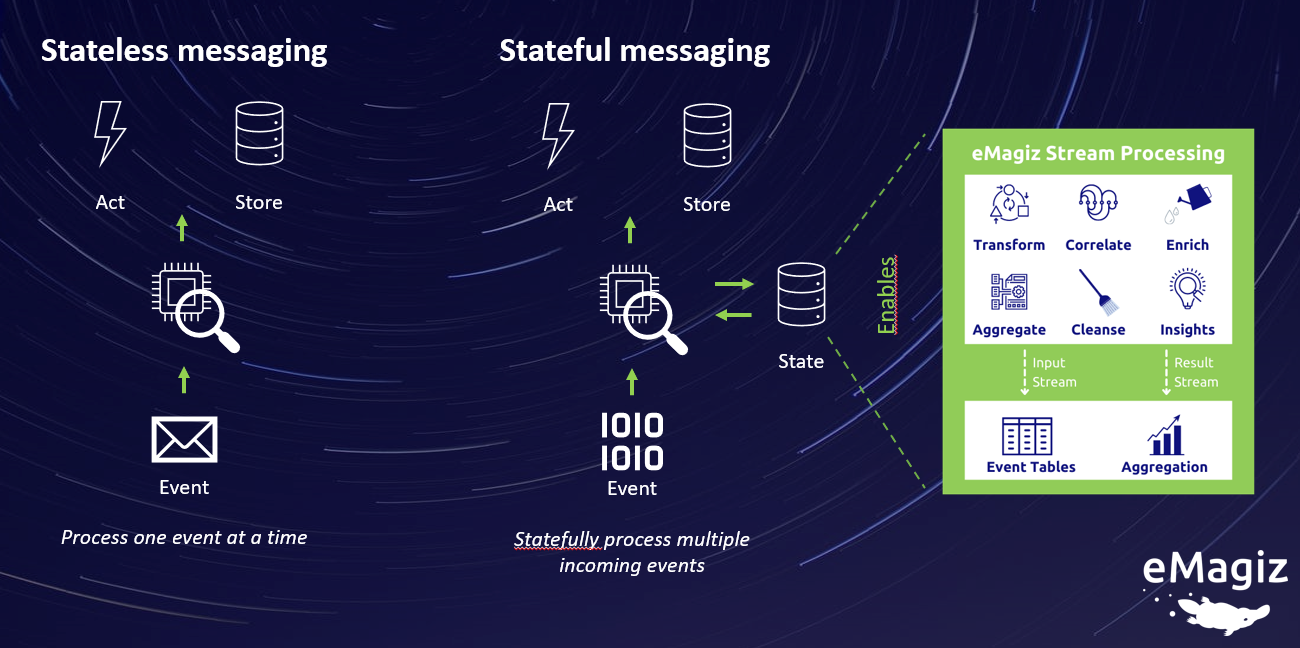
3.1 Benefits and Operations
Benefits of real time state generation are, first of all, that data can be provided immediately and is always up-to-date. Secondly, it is possible to take real time action and take real-time decisions. Lastly, there is no need to store data unnecessarily.
Stateful data can be generated through four main operations.
3.1.1 Enrichment
First of all, through enriching data. This means that information should be added to the data, so that it has more meaning. This can be achieved by storing states in a database. For example, when it is known that, if a person works from home, this is stored as A, and if a person works in the office, this is stored as B, the data can be enriched with ‘Home’ and ‘Office’. To ensure this, a database should be present storing the connection between A and Home, and B and Office.
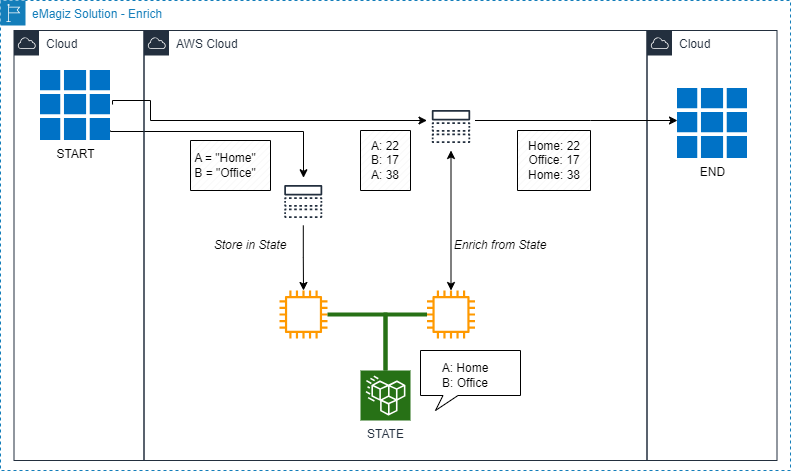
3.1.2 Aggregation
Secondly, stateful data can be obtained through aggregating data. Aggregation concerns a computation over a certain range of time, such as an average, minimum or maximum. Moreover, with state generation it is possible to define a trend, and recognize patterns in this trend. An advantage here, is that temporary states can be retained, instead of saving data for a longer period of time.
An example of aggregation is that, when the number of people working from home, or working at the office is stored, the average number of people working at home or at the office during the past 30 minutes can be determined.
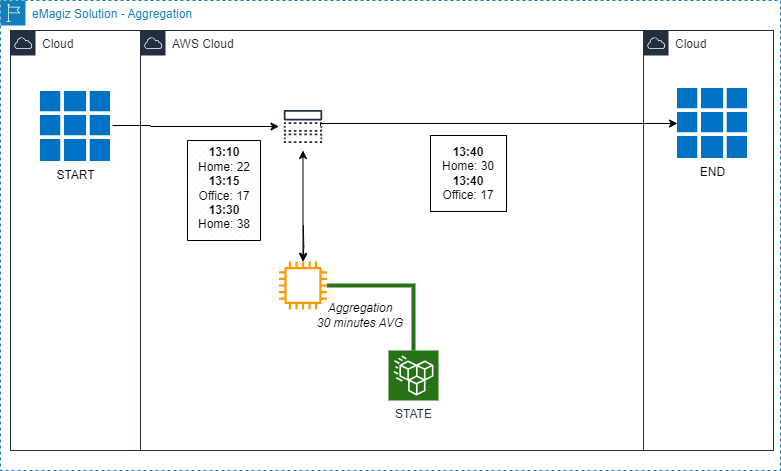
3.1.3 Change Detection
Thirdly, change detection can be applied. This means that a change in the data can be detected. For example, when the temperature at home rises to more than 30 degrees, this can be detected. It can then be defined that, when the temperature at home is more than 30 degrees and the heating is on, the heating should be turned off. In this example, the data is enriched with the last state of the air conditioning.
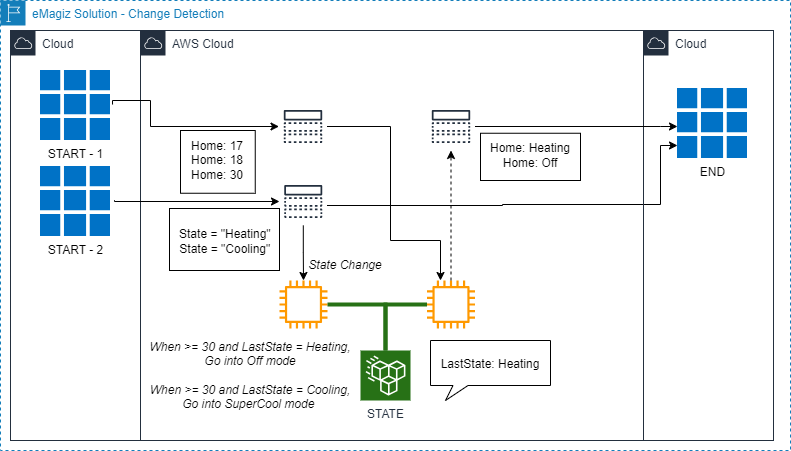
3.1.4 Duplicate Detection
Lastly, duplicate detection can be applied, meaning that duplicate data can be detected. For example, if the number of people working from home is recorded twice at a certain moment, this can be detected, and the data can be adapted accordingly.
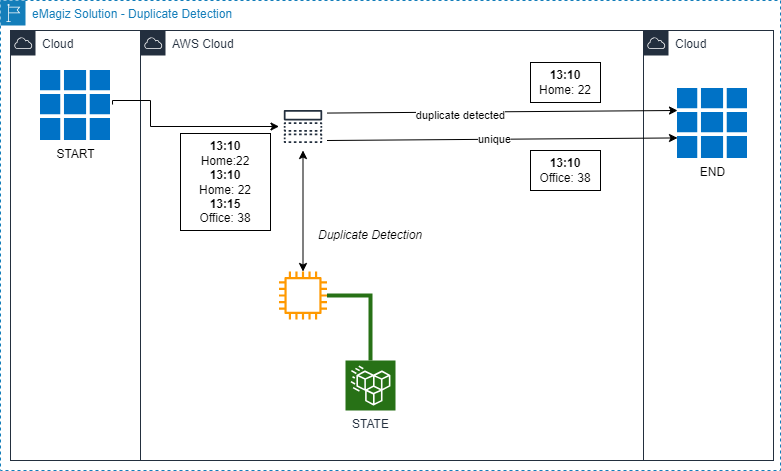
3.2 State Generation in eMagiz
State Generation components can be used in all eMagiz patterns. The enrich and aggregate functionalities are likely more fitting to Messaging and API Gateway as opposed to Event Streaming. For Event Streaming, the other two operations, change and duplicate detection, are more relevant.
A state can most logically be created in a central place through which the data flows. The reason for this, is that such a place has all the required information flowing through its processes to generate stateful data.
The state store is implemented inside the eMagiz runtime using various support objects. Once you have procured the license you can find store items (Navigation) and components inside the Flow Designer. These can be used to model the flow.
3.3 Use Cases
In the following, real-life implementations are given on how eMagiz State Generation has been realized through enrichment, aggregation, change detection, and duplicate detection.
3.3.1 Enrichment
Company A works with a backend system based on ID/Name combinations. These are different for each implementation, and can be retrieved through a unique API. A difficulty that arises, is that some APIs initially only return the IDs. To prevent multiple calls to our backend system, the key/value pairs (ID/Name) need to be stored, such that these can be used in subsequent calls.
The eMagiz solution for Company A can be viewed below.
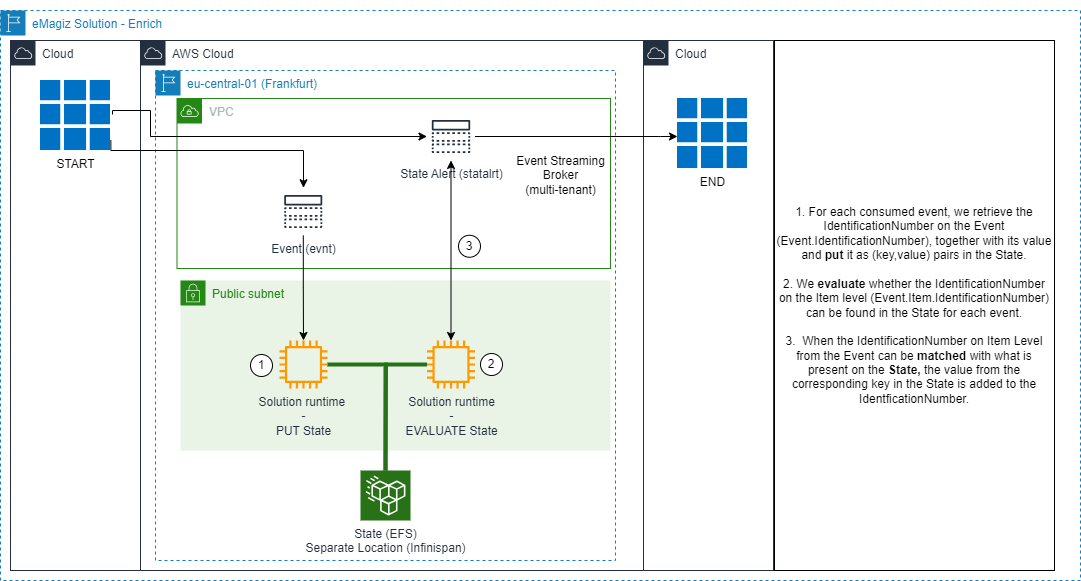
3.3.2 Aggregation
Company B provides contracts and files for their customers. Their customers manually upload contracts (one by one) to their files, which may take some time. It is desired by Company B that their customers receive a push notification once their files have been uploaded successfully. However, they do not wish to spam their customers by sending a push notification after each file upload when they are uploading several files. So, the push notification should be retained for some time, and should be sent once it is (almost) certain that no additional file will be uploaded.
In the figure below, the eMagiz solution for Company B can be viewed.

3.3.3 Change Detection
Company C tracks packages and parcels that have been ordered by their customers. When a package is not received within its expected timeframe, an exception occurs. It can happen that such an exception resolves itself, e.g. after rendering for some time, the package is not ‘stuck’ anymore, and is being processed. Before implementing state generation, such a change was never sent to the Alert Manager, because no new exception was triggered. As a result, the employees from Company C were still working under the assumption that the exception is valid, meaning that they could still be searching for a packet that had already been received.
With state generation, changes in package statuses are sent to the Alert Manager, so that they are aware of any (resolved) exceptions. In the figure below, the eMagiz solution for Company C can be viewed.
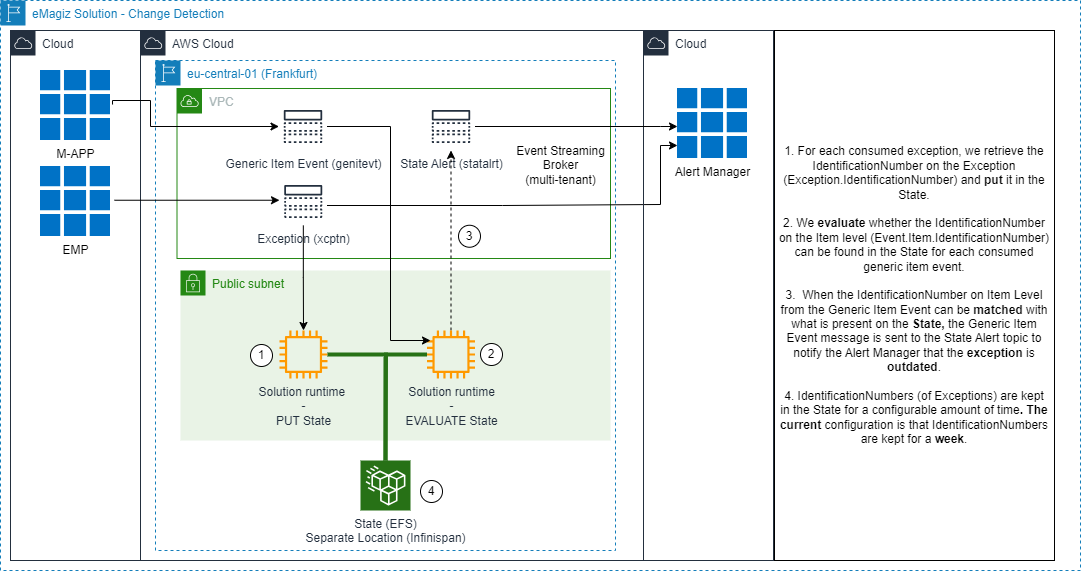
3.3.4 Duplicate Detection
Company D is concerned with receiving meter readings. From an external system, new meter readings, or corrected meter readings are received. To protect underlying applications, it needs to be checked whether a duplicate between the external system and their own internal system exists. This can be achieved through a check for each type of meter reading. When a duplicate is found, the meter reading is marked, such that it can be checked later in the process.
The eMagiz solution for Company D can be viewed below.

4. Key Takeaways
- State generation concerns the generation of a stateful application or service
- Stateful refers to the concept of storing a state of an object
- Storing a state is different compared to data in transit which is often refered as stateless data (eMagiz doesn't store or update the data when sending across)
- Stateful can be applied across all patterns in eMagiz and is embedded into the platform in such a way that it provided the same user experience
- Stateful data can be generated through four main operations: enrichment, aggregation, change detection, duplicate detection
